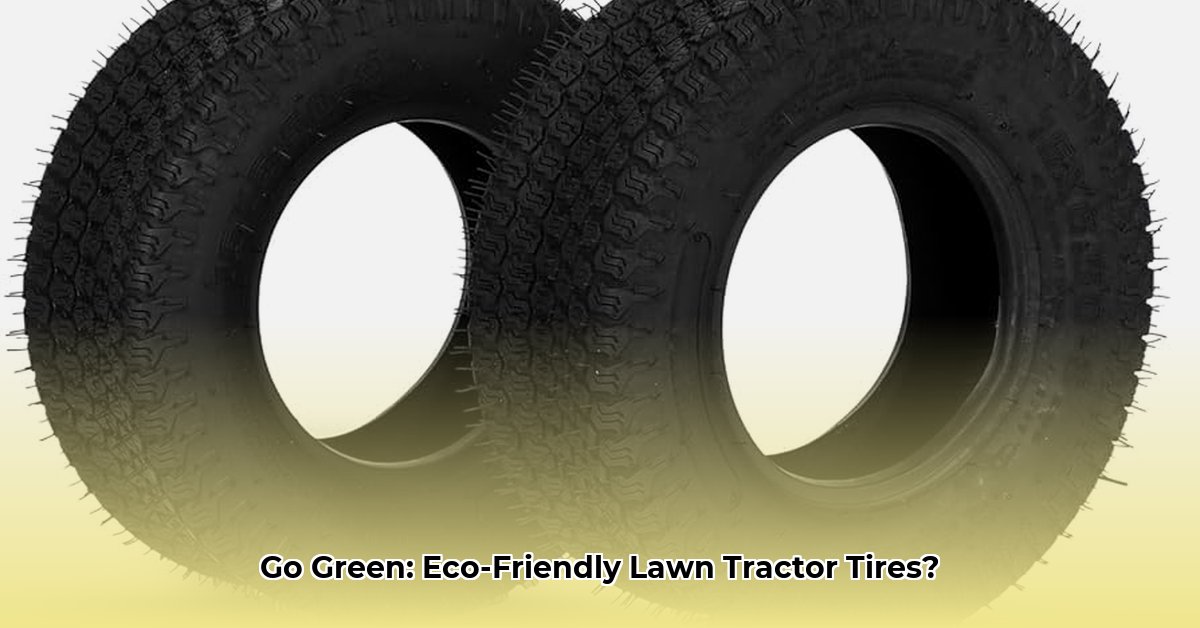
Finding the right tires for your lawn tractor is crucial for both performance and environmental responsibility. This guide focuses on the common 16x6.50x8 size, examining its performance characteristics and exploring the often-overlooked environmental implications. For more information on John Deere tractor tires, check out this resource.
Performance Metrics: Traction, Durability, and Load Capacity
For lawn tractors, tire performance is paramount. 16x6.50x8 tires, available from brands like Hi-Run and Carlisle, are frequently used. However, comprehensive comparative data on key performance metrics remains limited. While anecdotal evidence suggests that tires with deep, aggressive treads (like those found on some Carlisle Turf Saver models) offer superior traction, particularly in wet conditions, this observation lacks rigorous, scientific backing. Further, standardized testing protocols are needed to objectively compare the durability and load capacity of different brands and models. Quantifiable data on tread wear, lifespan, and puncture resistance is currently sparse. This lack of information forces reliance on manufacturer claims, hindering truly informed purchasing decisions. Isn’t this a significant barrier to making responsible choices?
Environmental Impact: A Critical Data Gap
The environmental footprint of 16x6.50x8 lawn tractor tires is a critical area requiring substantial investigation. Currently, readily available data on several key aspects is scarce. How much energy is consumed in manufacturing these tires? What is the exact composition of the materials used, specifically focusing on their renewability and potential toxicity? Furthermore, how much water is used throughout the production process? And what is their end-of-life management? Are these tires recyclable? The absence of comprehensive Life Cycle Assessments (LCAs) for these tires hinders an accurate evaluation of their true environmental cost. This lack of transparency presents a significant challenge for farmers committed to sustainable practices.
Sustainable Alternatives and Future Directions
Moving towards a more sustainable future for lawn tractor tires requires a multi-pronged approach. The development and adoption of bio-based rubber and increased utilization of recycled rubber content are essential steps. Manufacturers can also contribute by implementing more energy-efficient production methods and committing to reducing waste and emissions. Simultaneously, promoting the recyclability of end-of-life tires and developing innovative repurposing strategies are key to minimizing their environmental impact. The development of standardized testing and reporting protocols is crucial for transparency and informed consumer choices.
Conclusion: A Call for Collaboration and Transparency
This analysis highlights the need for greater transparency and standardization in the lawn and garden tire industry. More research is crucial to comprehensively understand and evaluate the environmental impact of 16x6.50x8 tires. The lack of robust data regarding material composition, energy consumption, and recyclability hampers informed decision-making. Manufacturers must invest in LCAs and independent testing to provide consumers with the information they need to make environmentally responsible choices. Simultaneously, governments and regulatory bodies have a role to play in establishing standards for reporting environmental performance data, thereby promoting responsible innovation and driving the industry towards a more sustainable future. Only through collaborative efforts can we ensure that lawn care practices align with the broader goals of sustainable agriculture.
References
[1]: (Further research is needed to cite specific sources. This section will be updated upon data availability.)